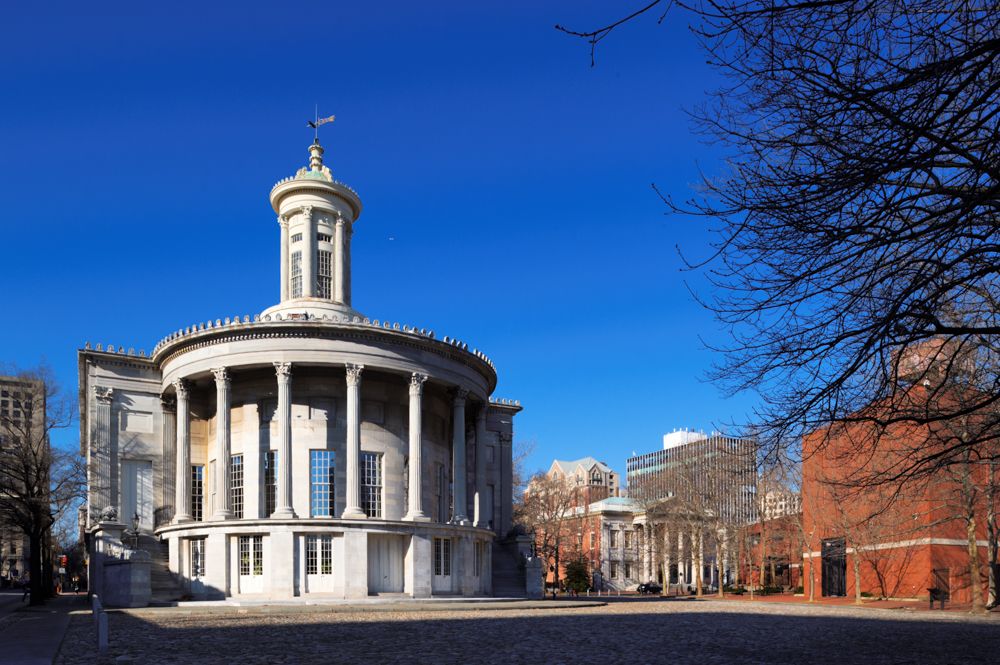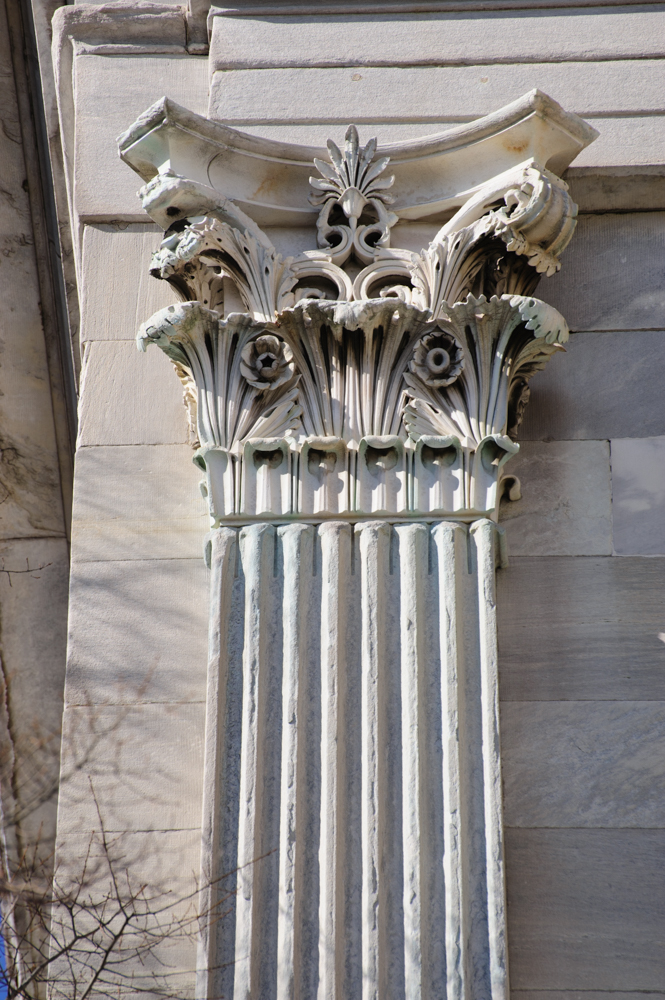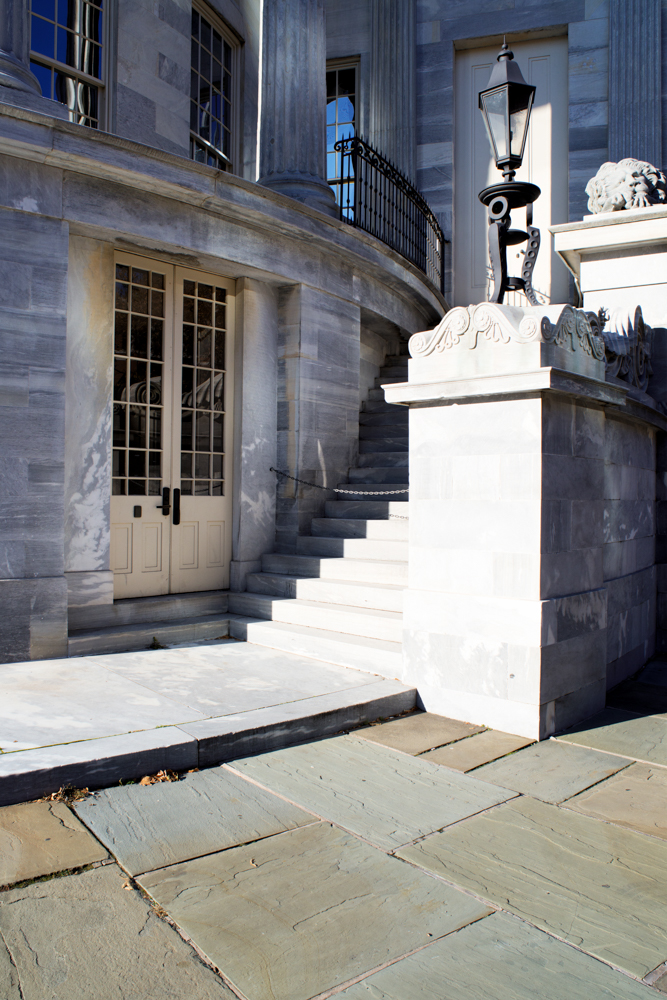Exterior
5/5
Interior
0/5
Site
2/5
History
3/5
Overall
5/5
Strickland’s tour-de-force, created just a few years after his Second Bank, shows a more self-assured mix and match attitude toward classical antecedents.
Administrative Offices



